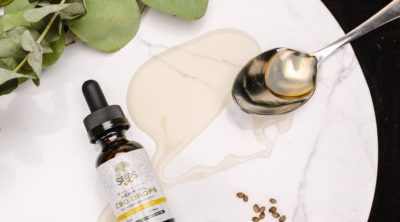Styes of the eye are painful sores or bumps, near the eye that affect each one of us at some point or the other in our lives. Some of us are more prone to this condition than others. Eye stye treatment, causes, and symptoms are discussed in the article below.
An eye stye is a red lump which appears near the edge of the eyelid. In some cases, this lump can also be sore. A stye resembles a pimple on the eyelid. It can grow on the inside as well as on the outside. There are various causes, but the most common cause is bacteria. These styes are usually harmless and go away after a few days when the body fights the infection. They do not cause any problem to vision. On the onset of this condition, there will be frequent watering in the affected eye and the person may experience light sensitivity or may feel as if something is stuck in the eye. Before we see the treatments, let’s see its causes and symptoms.
Causes
Usually, a bacterial infection in the sebaceous glands of the eyelid leads to the formation of a stye. A bacterium called Staphylococcus aureus is said to cause the infection. In some cases, the styes can be painful, tender, red, and swollen while in other cases, only a visible lump can be seen. Styes sometimes burst on their own and heal within a few days. It is better to leave the stye alone, else there are chances of spreading the infection.
Symptoms
The most noticeable symptom of a stye is a visible lump on the eyelid. When the surface of this lump breaks, pus can be discharged from the lump. If the pus drains away, the infection subsides way more quickly. The other symptom is discomfort when blinking. There can be sensitivity to light as well. Many times the eyes can be teary.
Treatment
Eye stye treatment is usually of two types. The first includes taking medication while the second includes using home remedies. It is important to note that neither of the options actually treat the infection that causes the stye. Rather, they focus on alleviating the pain and easing the discomfort caused by the condition.
Medicines
There are various over-the-counter medicines available for treating styes. Ointments, solutions, and medicated pads are all available to help treat the condition. These medicines are made of petroleum jelly and other emollients which help to keep the eye moisturized. They help relieve symptoms like pain, itching, burning, stinging, etc. However, these medicines cannot treat the infection which is responsible for the stye.
Home Remedies
As styes heal on their own, individuals who do not want to risk any side effects of taking medications can try using some home remedies. The following are some of the popular options used:
- A warm compress applied to the stye for several minutes about 3 to 4 times a day is a good treatment for children. This treatment can be used by adults as well. This helps in the lesion to come to a head to enable draining out of the pus.
- Another option is to wash the eyes with alum water. You will need to mix 2 or 3 granules of alum in a cup of water and use the water to wash your eyes.
- In a soup bowl, place a handful of fresh parsley and pour a cup of boiling water on the parsley. Let it steep for 8 to 10 minutes. Take a clean washcloth and soak it in the hot parsley water. Lie down and put the wash cloth on your closed eyelids. Leave the wash cloth on the stye for 15 minutes. You can repeat this procedure 3 times a day. This will help in reducing the swelling and puffiness around the eyes.
- Rubbing clove in water and applying that clove-water to the stye is another popular home remedy. Grated potato can also be used as a poultice to reduce swelling.
- An important part of the treatment is to avoid wearing any eye make up. Make up can cause irritation to the eyes and aggravate the condition.
- Washing your eyes two to three times a day will also prove to be beneficial, as it will ensure that no more germs make their way into the eyes. As a preventive measure, make sure you do not rub your eyes as the hands are usually full of germs.
- For the stye to heal faster, you will have to maintain a high level of hygiene. It is also important that you do not share your makeup, towels, etc. with others. Also, you need to take the required precautions when you are removing or inserting lenses.
This is a common condition that is not serious or life-threatening. Following the treatment options mentioned above can provide relief to this condition so that it heals in a short period. However, if the infection persists even after a few days of using the remedies, you should visit a doctor to get the stye treated.
Disclaimer: This article is for informative purposes only, and should not be used as a replacement for expert medical advice.


